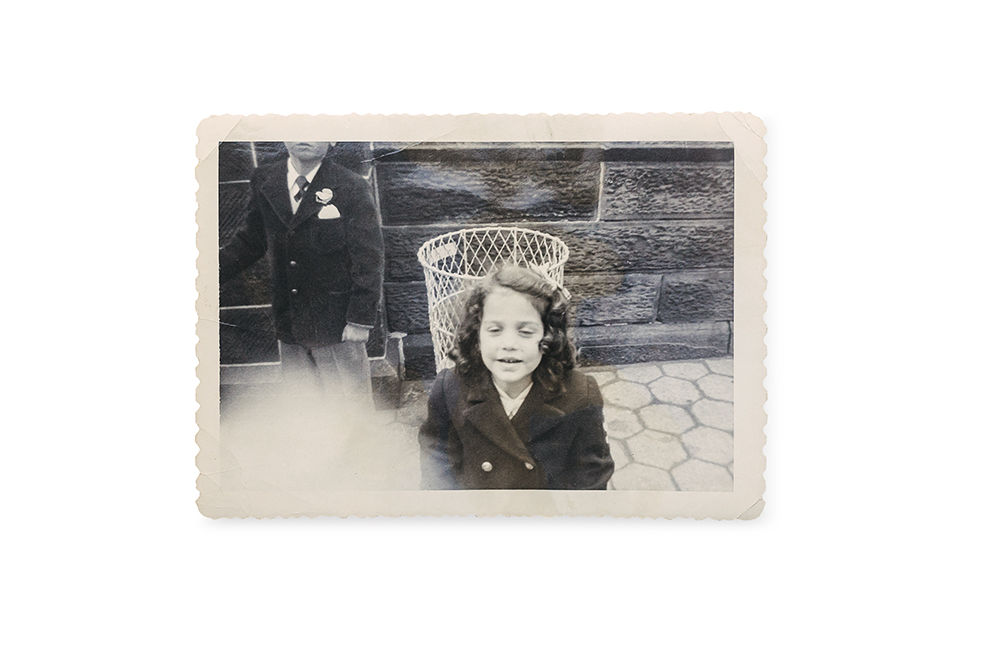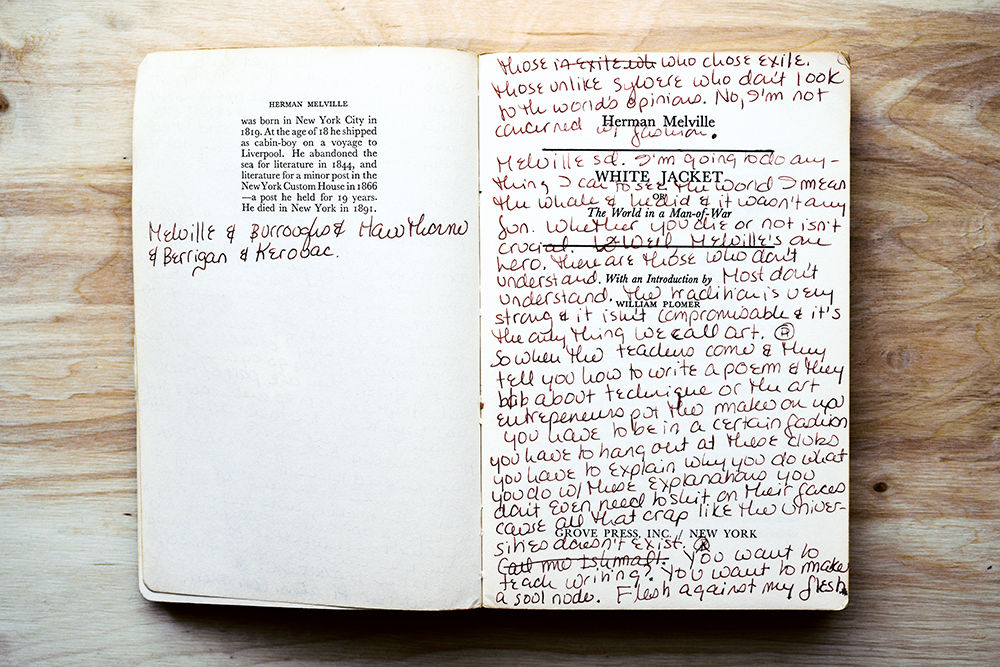Kathy Acker’s impact as a writer and performer, a cultural figure, and an (often overlooked) academic is uniquely tangled: the innovations of her hybrid, transgressive literature, written between 1972 and 1996, baffled her contemporaries to a degree that, once they had cracked the code, it was easily written off as yesterday’s avant-garde. And yet her work, and her flamboyant punk persona, proved to be disruptive at a time when disruption didn’t signal an antitruth nihilism but a quest to subvert consciousness and challenge the rigidity of meaning, as she herself once put it. Her use of collage and appropriation raised questions that echo through today’s cultural landscape with striking urgency.
A significant element of Acker’s creative process was her personal library. She was an avid and active reader. She frequently marked passages that she later pirated for her own novels and traced illustrations that would appear in her works whenever writing alone was insufficient. Most important, she used margins, blank pages, and the empty spaces in front matter to formulate spontaneous ideas about her own art and (love) life—a glimpse into the writer’s mind at its most unfiltered.
Her library is now housed in the Kathy Acker Reading Room, at the University of Cologne. Comprising more than 6,600 books, vinyl records, cassette tapes, pieces of correspondence, and personal items, the collection provides rare insight into her primary sources of inspiration—from world literature to underground comics, philosophy to pulp erotica, Bikini Kill to Salt-N-Pepa. “We all love our books,” says Matias Viegener, the executor of Acker’s estate. “But there was an intensity to Kathy’s relationship with her library. It was a reciprocal relationship—the books spoke to her and she could talk with them. She would find herself in those books.”
Acker valued her library as an entity to be preserved at all costs. After her death, in 1997, it was maintained by Viegener in California. In 2015, the library was acquired by Norbert Finzsch and Hanjo Berressem of the University of Cologne. Viegener and Finzsch arranged to have the boxes driven across the United States to the East Coast, where they were shipped by freighter to Germany. In a plot twist Acker would have enjoyed, many of the books began molding in the ship’s hull. They were restored using a new preservation technique developed by the Technische Hochschule Köln.
The following selection was put together with the help of Daniel Schulz, curator of the Kathy Acker Reading Room. (Note: The publication dates given in the captions refer to the editions in Acker’s collection.)
 Red lipstick found in a box among Acker’s books.
Red lipstick found in a box among Acker’s books.
Asked, in 1983, about her favorite shade of lipstick, Acker replied, “Red. My mom used it. Looks like cunt color after fucking.” Putting on red lipstick “the exact color of what she’s wearing” plays a central role in Requiem (1997), the opera libretto in which Acker addresses her cancer; it would be her last published work. For Matias Viegener, Acker’s friend, the red lipstick symbolizes a longing for luxurious things that was a crucial aspect of her notoriously performative nature.
 Portrait of Kathy Acker (then Karen Alexander), age three, found in The Sand Child by Tahar Ben Jelloun (1985).
Portrait of Kathy Acker (then Karen Alexander), age three, found in The Sand Child by Tahar Ben Jelloun (1985).
A notation in ballpoint pen on the back of the photograph reads “K” and “50”—Karen, 1950. Like many details of Acker’s life, her childhood is shrouded in self-created myth. We know that she was born in 1947 (though this date is frequently misstated) and that she was raised by her mother and stepfather in a well-to-do household on the Upper East Side of Manhattan. Her father left the family before her birth, and she was given the surname of her stepfather, Albert Alexander. In 1966, she married Bob Acker, whom she met at Brandeis University. Kathy and Bob broke up three years later, but Kathy kept the name throughout her life.
 Notes found in Herman Melville’s ‘White Jacket; or, The World in a Man-of-War’ (1956).
Notes found in Herman Melville’s ‘White Jacket; or, The World in a Man-of-War’ (1956).
The Melville section is one of the most extensive parts of Acker’s library. In these (drunkenly written) annotations found on the opening pages of Melville’s novel, Acker locates herself in the outlaw tradition of American writing. “Melville & Burroughs & Hawthorne & Berrigan & Kerouac”: all authors she cited as major influences and whose work she appropriated. Their writing provided her with a cultural nimbus and stylistic tool kit for challenging the constraints of the nineteenth-century novel, which she tried to transcend in her work.



